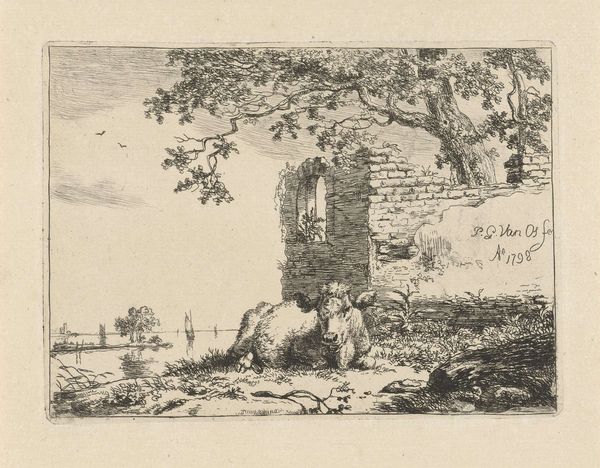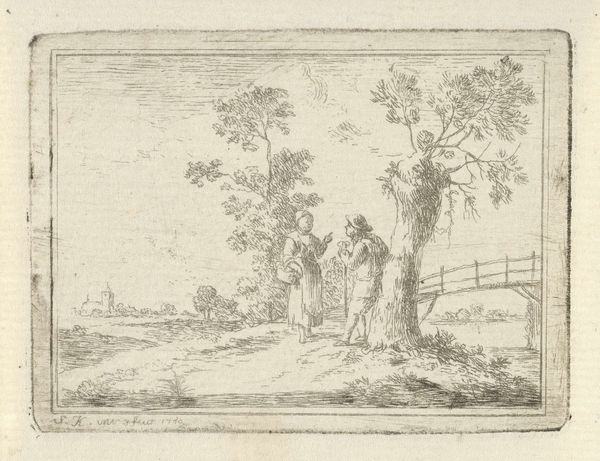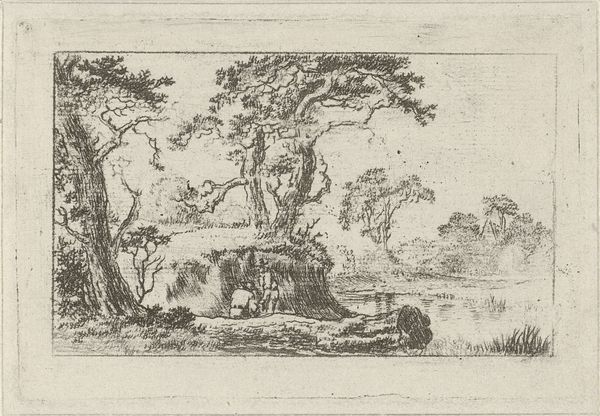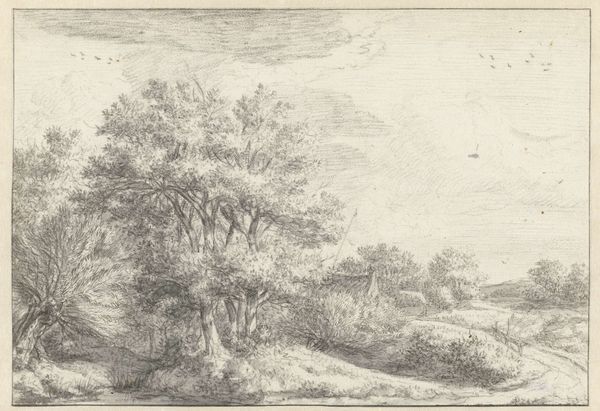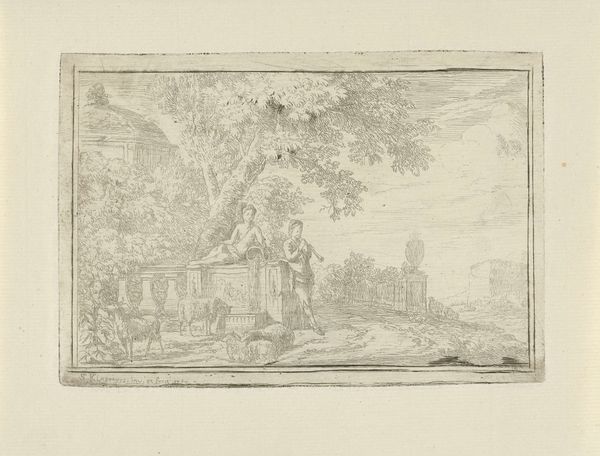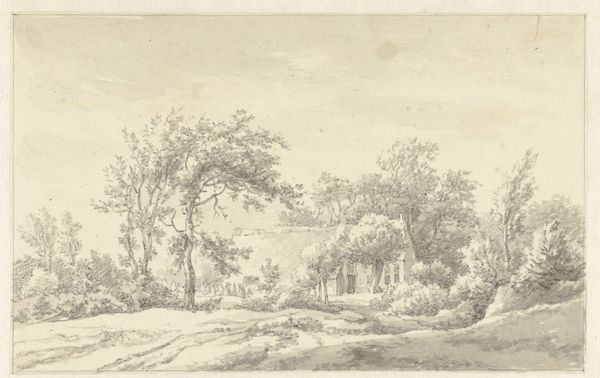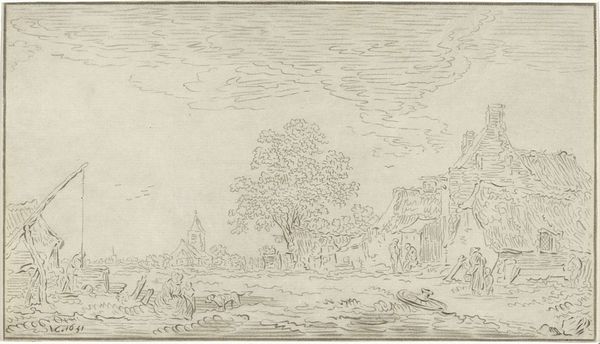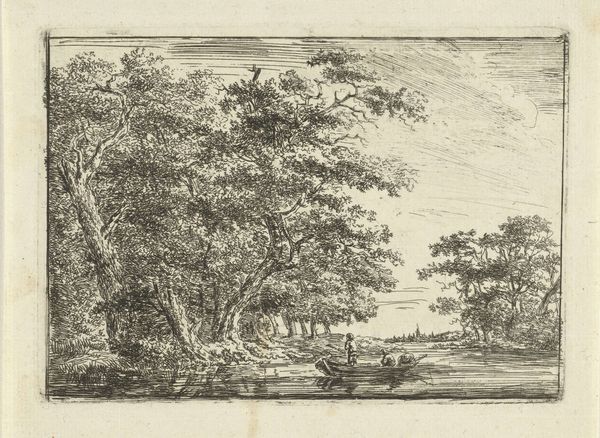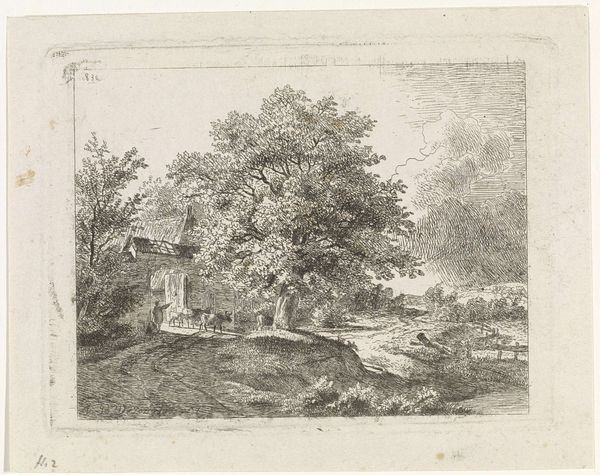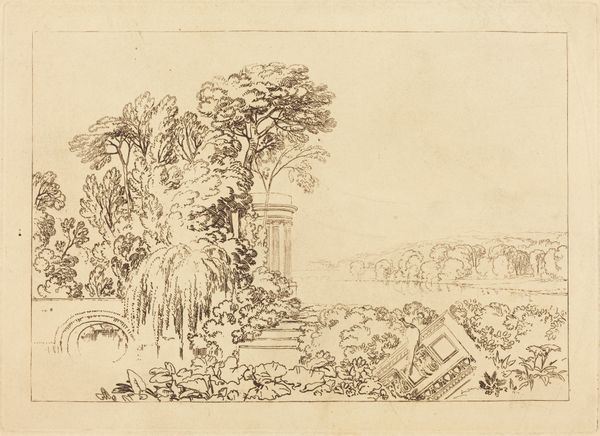
drawing, print, etching, intaglio
#
drawing
# print
#
etching
#
intaglio
#
landscape
#
realism
Dimensions: height 130 mm, width 175 mm
Copyright: Rijks Museum: Open Domain
Curator: Here we have an etching by an anonymous artist dating from somewhere between 1798 and 1848 titled “Liggend kalf voor een ruïne,” which translates to “Calf Lying Down Before a Ruin.” Editor: Oh, the light! It's that delicate touch, barely there, and yet it gives everything such a still, summery quality. Curator: The artist employed the intaglio technique. Look closely and you'll observe that the image is incised into a metal plate. Acid does the biting to create those lines and when it’s filled with ink, pressed, it transfers to paper. You can see this attention to process across multiple landscapes of that period, where farmers sought new efficiency of production while cities like Amsterdam decayed or even boomed in ways that could appear decadent to the rural eye. Editor: I'm intrigued by this gentle positioning of life and ruin – a lazy calf nestled next to the remains of a bygone structure, nature almost embracing decay. There is a profound sweetness, isn’t there? Curator: These artists, even when "anonymous", were incredibly skilled craftspeople. It prompts reflection on labor itself, as if they are silently documenting both sides of labor in production; on one hand are farming efforts to grow the land as seen with this calf, while another, like the stone cutters and builders whose time passed building those ruins, seems more forgotten. It almost questions the idea of progress. Editor: Progress or the fleeting nature of all things. Makes you wonder what future eyes will make of our concrete jungles someday... a crumbling testament to a civilization’s follies, I imagine, overgrown with tenacious vines and curious animals. It’s as if time itself becomes a canvas here. Curator: Perhaps. And how our means of representing, reproducing, and disseminating visual art shapes what, where, and when we perceive meaning. Editor: I appreciate the image for its reflective nature on life's transient beauty, but equally, your focus highlights the art and time embodied by these techniques. Curator: A poignant reflection, if I may say so myself. Editor: Agreed. The printmaker offers us much to see... and to feel.
Comments
No comments
Be the first to comment and join the conversation on the ultimate creative platform.
